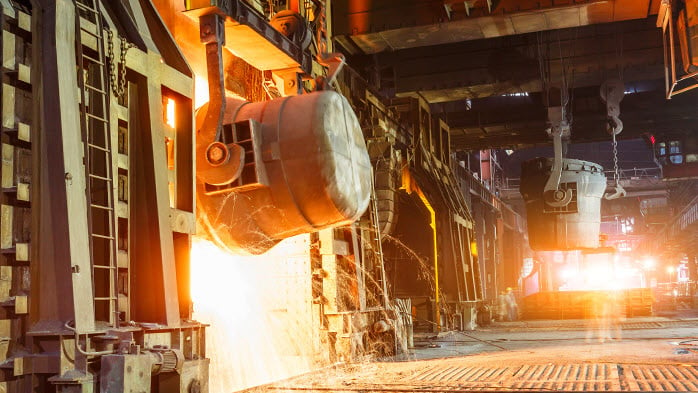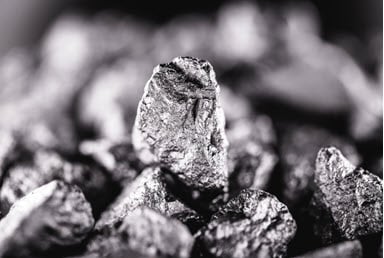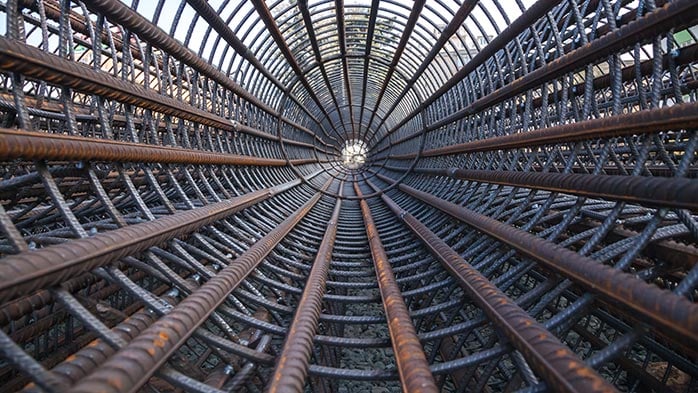Vanadium prices have risen sharply since mid-2017, sending investor interest – and end-user concerns – soaring in this often-overlooked commodity. Traditionally just a minor, though important, alloying element in steelmaking, vanadium is the potential next big thing in grid-scale stationary energy storage solutions. This Insight from CRU examines the origins of the price spike and explains why the higher price environment will last longer than in the past.
Why did prices surge?
Between June 2017 and May 2018, prices for ferrovanadium DDP Europe increased from $12/lb to $30-32/lb, the highest level since 2008. Other ferrovanadium benchmarks surged too, along with the Chinese vanadium pentoxide (V2O5) feedstock price which rose from a typical $5-6/lb range to over $15/lb in May 2018.
A coincidence of cyclical, structural and one-off factors have triggered this:
- In the years leading up to 2017/18, weak steel and vanadium prices drove out high cost co-product1 supply. The closure of Highveld Steel and Vanadium in South Africa in 2014 on its own cut out ~12% of global vanadium supply. Market pressures for Chinese co-producers were reinforced by a low international iron ore price which cut raw material costs for their domestic competitors: Chinese co-product supply of vanadium dropped by 22% between 2014 and 2016.
- Rising environmental standards have been introduced in China, including controls on production facilities in Hebei and Sichuan, as well as waste importation bans that impacted vanadium producers’ ability to access vanadium rich slags, have constrainted supply. Along with broader supply-side reform to curb over-capacity and improve profitability, Chinese vanadium suppliers have been unable to respond fully to higher prices.
- Traders and producers took speculative positions, buoyed by the January 2018 announcement of new standards for tensile strength of Chinese steel rebar which are expected to sharply drive up vanadium’s intensity of use when they come into force in November 2018. Momentum was reinforced by excitement about the potential for vanadium’s use as a battery material, as well as isolated concentration issues at slag processors in early 2018 which reduced the availability of V2O5 concentrate.
High prices set to last several years
Today’s price level of ~$30-32/lb EU FeV 80% V, while not “infrequent”, has historically (in the last 20 years) not been sustained for more than a year, as seen during 2004/2005 and 2007/2008. This time we expect prices to stay elevated for longer, as some of the cyclical drivers unwind much more slowly than in the past and structural factors provide long term support.
- The Chinese government’s focus on safety and the environment means that the above-mentioned new standards for rebar are expected to be firmly enforced. CRU expects Chinese demand for vanadium in the steelmaking sector to increase by 18% in 2018 and 14% in 2019, adding 12,000 tonnes and equivalent to 14% of the total vanadium market size.
- Vanadium redox battery2 projects, including the 800MWh battery project under construction in Dalian, China will inject over 1,800t V of new demand in 2018 to a sector that consumed virtually nothing in 2014. Stationary storage as a sector has huge long term potential in load levelling and energy shifting, especially in grid systems with a high proportion of intermittent renewably generated power. While there is much uncertainty about the rate of uptake of VRFBs and the sensitivity of their adoption to vanadium prices.
- In the short term we see relatively limited scope for substitution for vanadium in steelmaking applications though some switching could occur in the long term if price differentials widen for the main substitute, ferroniobium.
- Recent market deficits have left inventories at historically low levels. Existing co-product mills in China are constrained in raising production by supply side reform and rising environmental standards. With margins in the steel and iron ore sector expected to moderate post-2018 from recent highs, economic incentives are unlikely to warrant the quick restart of idled co-product capacity in China and South Africa. The development of new co-product supply in other regions is going to be further challenged by the high capex intensity of such investments, and more tepid growth in steel demand going forward.
- The rise in environmental standards in China has also restricted by-product supply from stone coal producers in China. These operations have in the past acted as high cost marginal suppliers. The limited stone coal production that will come online during the current era of elevated prices will be at a higher cost per pound than in the past.
Impacts felt across numerous industries
Price spikes in vanadium are nothing unsual. There have been regular fly-ups in the past, characterised by prices falling nearly as quickly as they rose. This spike, while not sustainable longer term, is likely to be different, and longer lasting. With vanadium intensity rising in China on the back of changing rebar regulations, battery end-use looming on the horizon, and, crucially, economic and regulatory / policy issues weighing on the supply side (placing more emphasis on the development of primary production), prices are viewed to be better supported than in the past. This will have a major bearing on key industrial sectors, manufacturers and upstream miners and processors, including:
- Steel and specialty alloy manufacturers, and their end-users in construction, aerospace, automotive, machinery etc. How will they mitigate short term procurement challenges?
- Utilities and battery manufacturers looking at the potential use of vanadium redox batteries in load-leveling applications, and battery manufacturers. Where will they find stable sources of high quality vanadium, and will it be affordable?
- Primary and co-product vanadium projects. What will the long term incentive price be for the greenfield supply the world will need?
- Chemical refiners ultilising vanadium containing catalysts – including but not limited to oil refineries. How will catalyst consumers mitigate medium term price pressure?
- Government planners. Where are the opportunities to attract investment in the vanadium value chain, adding value to domestic resources? Have their critical vanadium-consuming industries done enough to secure future material needs?
- Subsitute producers – such as those manufacturing ferroniobium. What do these trends imply about substitution and growth opportunities?
At CRU we make it our business to assess and identify exposures and opportunities arising from cyclical and structural changes in the market and, through our global and dedicated analyst teams and consultants, provide support in the form of regular market analysis and tailored consulting services, in financial due diligence, growth and procurement strategy.
Endnotes:
- Production of steel and vanadium. Producers are typically integrated with low-grade titaniferrous magnetite mines, and are only usually competitive as steel producers by selling by-products such as vanadium.
- Vanadium redox flow batteries (VRFB) consume V2O5 in the electrolyte solution which is used to store electricity. VRFBs are primarily used in the grid-scale stationary storage market, for which the scalability of the flow-type battery provides a key advantage.









